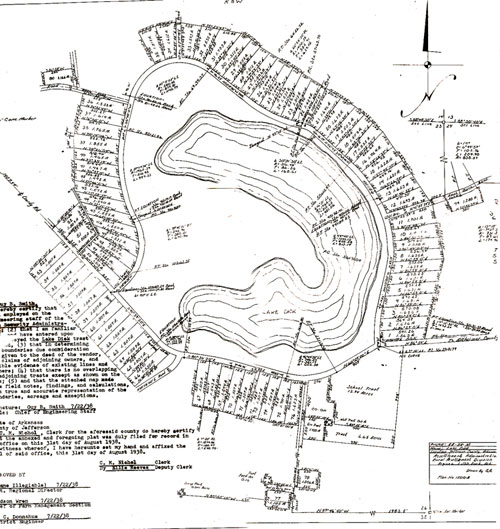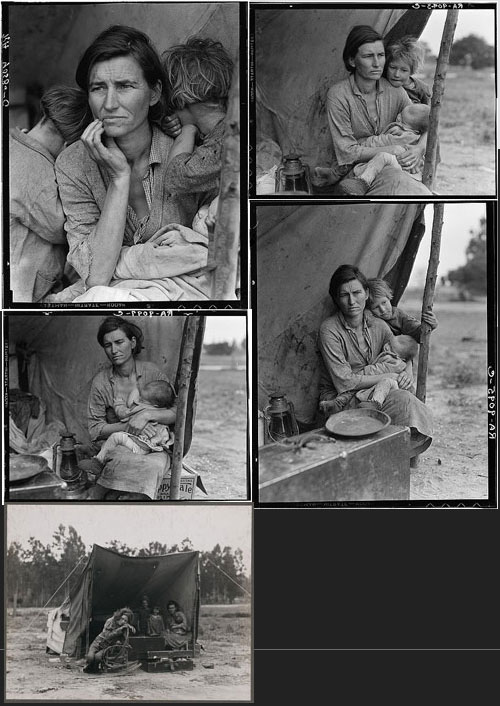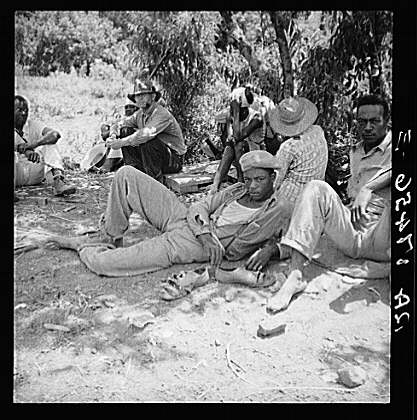| home | pg. 1 | pg. 2 | pg. 3 | pg. 4 | pg. 5 | pg. 6 | pg. 7 | pg. 8 | pg. 9 | pg. 10 | pg. 11 | pg. 12 | pg. 13 | pg. 14 | pg. 15 | pg. 16 | pg. 17 | notes | Transylvania detail 1 | Transylvania detail 2 | Wolcott detail | Bibliography | D. Gorton Homepage | Jane Adams Homepage
|
|
Reading the Photographic Record
by
Jane Adams
D. Gorton
|
Other absences expose sensibilities and agendas of the time. Several scholars have studied the FSA photographers and photographs, using the available records, such as Roy Stryker’s instructions to the photographers. Their work was always harnessed to national narratives, in which the local and particular lifted off of its specificity and became exemplary of some universal. This was the era of modernism, both “high” and “low.” |
 Lake Dick, Arkansas, was the most centralized RA/FSA project we have found in the Delta. The clients lived in lots fronting on the lake and operated the farm as a single unit under the direction of a farm manager. |
| This distinction of both sensibility and ideology can be seen in the FSA photographers. One indication of this is how the human subjects are treated by the photographer: Few of the people photographed appear with their names. This is partly an artifact of field conditions, which required the photographers to write captions a considerable time after they shot the photo. (see http://memory.loc.gov/ammem/ fsahtml/fabout.html for a description of the process.) More important, most of the photographers appear to have viewed the people they shot as exemplary of a larger story, not people whose own lives – and therefore names – were important. Notably, Marion Post Wolcott identified many of her subjects by name. But Lange’s Migrant Mother, like her plantation owner cum overseer, remained nameless until their fame spurred others – or themselves – to name them.
|
 |
|
Anyone who has worked with local photo collections knows that people devote enormous care to naming everyone possible. The gap between this sensibility – of remembering one’s friends and neighbors, and the documentary photographer’s desire to capture an exemplary moment – reveals the disconnect between the FSA photographers’ cosmopolitan view of their subjects and the subjective reality of those they photographed. That critique has been made over and over, and we do not need to repeat it here. |

Lunchtime for cotton hoers. Dorothea Lange. June 1937. LC-USF34- 017456-E
|
| home | pg. 1 | pg. 2 | pg. 3 | pg. 4 | pg. 5 | pg. 6 | pg. 7 | pg. 8 | pg. 9 | pg. 10 | pg. 11 | pg. 12 | pg. 13 | pg. 14 | pg. 15 | pg. 16 | pg. 17 | notes | Bibliography | Transylvania detail 1 | Transylvania detail 2 | Wolcott detail |
|
|